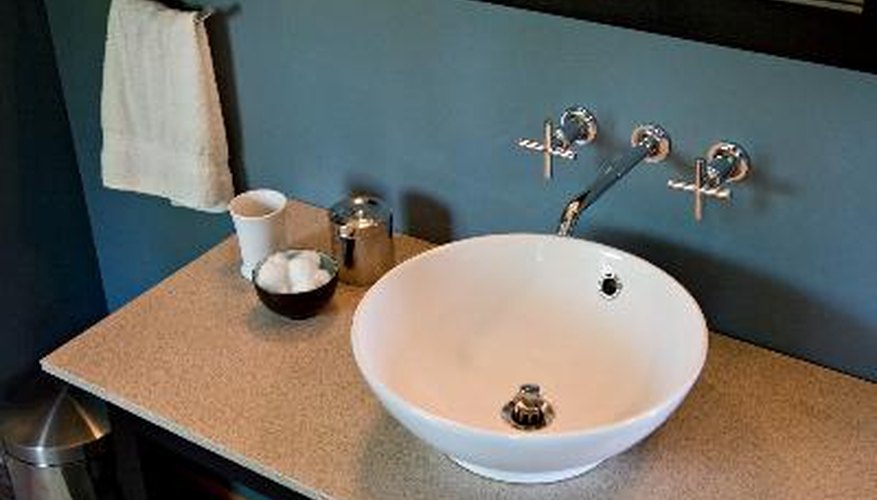When the time comes to remodel, or add an extra bathroom in your home, you may wonder what is common or standard for the bathroom sink height. Even though there are standards that builders and designers use as guidelines, these guidelines can be changed to suit the needs of the homeowner.
Height
Bathroom sinks measure on average between 80 and 85 cm (32 or 34 inches) from the floor. However, a person of short stature or a person who is taller than most people can customise the height of his sink for his comfort. Allow for a distance of at least 30 cm (12 inches) from the centre of the sink to the nearest wall.
Vanities
Many vanity styles will dictate the height of the sink. Vanities that are prefabricated wood cabinets with countertops attached take out the guesswork of where to install the sink. Other styles that are wall mounted allow the homeowner a choice in the placement height of the sink. Whether you decide to first choose a sink and then add a vanity, or the other way around, the two must work well together as far as design.
- Many vanity styles will dictate the height of the sink.
- Vanities that are prefabricated wood cabinets with countertops attached take out the guesswork of where to install the sink.
Adding height
A tall person may find the height of the average sink rather uncomfortable. However, the height can be altered with the addition of a new base that could add an extra 15 to 20 cm (6 to 8 inches). Glass blocks are not only strong but come in tinted and textured glass. You can make the glass a standout by placing lighting behind the glass and use as an unusual night light. Height can also be gained by using a kitchen base cabinet rather than a traditional bathroom vanity.
- A tall person may find the height of the average sink rather uncomfortable.
Lower the sink
Do away with the inconvenience of a stepstool by mounting the sink directly to the wall. A wall mounted sink will allow you to install the sink to your exact specifications. A skirt can be attached to the sink to cover the pipes and keep them out of sight, although many attractive sink styles are designed to display the pipes beneath the sink.
